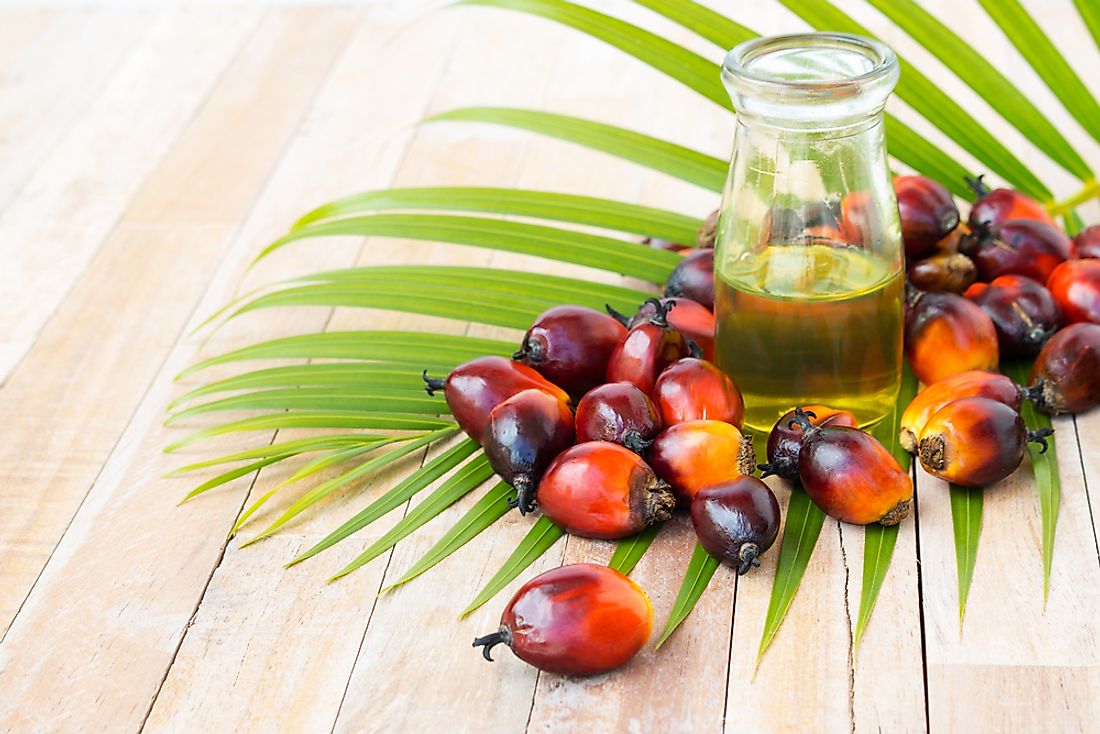Top Palm Oil Producing Countries In The World

Palm oil is processed from the fruit of the oil palm tree, and there are three common varieties of palm tree which are cultivated throughout the world, and they include the maripa palm tree, American oil palm tree, and the African oil palm tree. The palm oil in its natural state has a reddish color as a result of the high content of beta-carotene. There is a big difference between palm kernel oil and the typical palm oil. Palm kernel oil is from the kernel of the same fruit and the difference being in the color where the kernel oil lacks the carotenoids and is therefore not reddish. Palm oil and coconut oil are some of the highly saturated fats from vegetables, and at room temperature, they are semi-solid. Palm oil is widely-used as a cooking ingredient especially in Southeast Asia and some parts of Brazil and along the tropical belt of Africa. The reason why it is widely used in the food industry in different regions of the world is due to its low cost and its high oxidative ability when it is used in frying. In 2015, it was estimated that an average world consumption per head of palm oil stood at 17 pounds. Malaysia and Indonesia are the largest producers of palm oil accounting for almost 90% of the world production.
Top Palm Oil Producing Countries
Indonesia
Indonesia is by far the largest producer of palm oil, and this is supported by the ever-rising large palm growing areas in the country and export figures. For example, in 2016, the country produced 36,000,000 metric tons out of which 25.1 million tons were exported. It is estimated that by 2020, the palm oil project in Indonesia will cover approximately 12 million hectares. Indonesia was producing 35% of the world’s palm oil in 2012, and India and China are the importers of Indonesia’s palm oil.
Malaysia
Currently, Malaysia is second in palm oil production after Indonesia with its overall production accounting for 39% of the global production, while its palm oil exports account for around 44%. Malaysia possesses large plantations, and as of 2016, the country’s total palm oil production amounted to 2.1 million metric tons. Production of Palm oil in the country is categorized into three; private, smallholder, and joint venture. However, the economic activity poses a serious environmental threat in the country by polluting water sources, leading to the loss of biodiversity, and deforestation. Malaysia is the leading exporter of the palm oil with its primary importing countries being the European Union, Pakistan, China, the US, and India.
Thailand
Thailand is the third top producer of palm oil in the world, and the majority of the producers in the country are the small-scale farmers, who are responsible for 76% of the country’s output. Palm oil production in the country rose from 6.39 million tons in 2007 to 10.78 million tons in 2011. The province of Surat Thani had the highest production of palm oil accounting for 26.59% of all the country’s production. Producers in the country could be categorized into three groups which include smallholder farmers, large companies, and cooperatives and self-help groups. Most of the palm oil produced in Thailand is used locally, and a small portion is for export. Some of the challenges facing the palm oil production in the country include lack of appropriate knowledge in managing palm oil, lack of finances, low quality of seedlings, and low rainfall. The smallholder farmers also face the problem of marketing because they do not have the bargaining power over the prices.
History of Palm Oil
Use of palm oil can be traced as far back as 5000 years ago. Archeologists have unearthed evidence indicating that palm oil was used in the tomb of Abydos which dates to 3000 BCE, and it is thought they were brought to Egypt by the traders. Palm oil has also been used for several centuries in parts of Central and West Africa, and traders from Europe purchased it occasionally for use in cooking. During the industrial revolution, palm oil became the most sought-after commodity because it was used as an industrial lubricant for machinery. Palm oil has been used widely to manufacture soap, and the earliest pioneers were the Lever brothers, now known as the Unilever. By 1870s, palm oil was the primary export product from West Africa for countries such as Nigeria and Ghana.
Top Palm Oil Producing Countries In The World
| Rank | Country | Production (in metric tons) |
|---|---|---|
| 1 | Indonesia | 36,000,000 |
| 2 | Malaysia | 21,000,000 |
| 3 | Thailand | 2,200,000 |
| 4 | Colombia | 1,320,000 |
| 5 | Nigeria | 970,000 |
| 6 | World | 58,800,000 |







